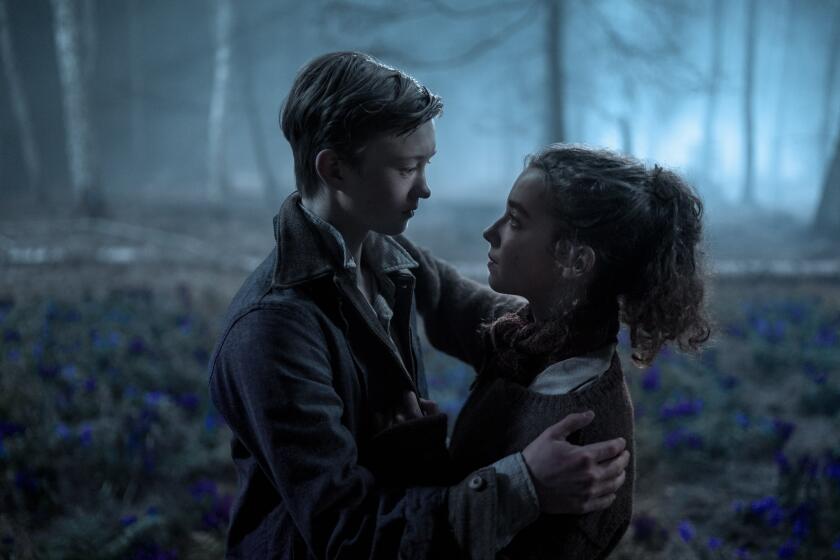Restored ‘Legong’ offers a look at Bali in the ‘30s
Legong: Dance of the Virgins
Milestone Films, $30
The UCLA Film and Television Archive recently restored the picture and sound of this rarity from 1935, one of a spate of “quasi-documentaries” made in the 1920s and ‘30s after the international success of such Robert J. Flaherty films as “Nanook of the North” and “Tabu.” Those “quasi-documentaries” were shot in exotic locales and employed the people of the area to tell a fictional story. Such is the case of “Legong,” directed by Henri de la Falaise, a French World War I war hero who married Gloria Swanson in the 1920s and actress Constance Bennett in the 1930s.
Obtaining money from his wife -- “Legong” is a “Bennett Production” -- De la Falaise and a small crew went to Bali in 1933 to begin production.
The film revolves around a young woman, Poutou, a Legong dancer -- temple maiden -- in her community, who falls in love with a handsome, young drummer, Nyoung.
Her father, who raises fighting roosters, is thrilled with her choice. But when Nyoung falls in love with her half-sister, Saplak, he spurns Poutou. The shame and grief of losing the one she loves is so traumatic for her that Poutou drowns herself in a local river.
De la Falaise wisely shot the film in two-color Technicolor, which brings out the vibrant reds and greens of Bali. The film shimmers with the beauty and lushness of the island and captures the brilliance of the costumes and the country as well as the dances, religious rituals, parades and the hustle-bustle of the local marketplace.
Back in 1935, British censors trimmed scenes they deemed too violent, including a cockfighting sequence, and American censors cut any close-ups of the topless women. The restored “Legong” clocks in at 65 minutes.
Extras: A second optional track features an expressive new score -- there is no dialogue in the film -- composed by Richard Marriott and I. Made Subandi and performed by the Gamelan Sekar Jaya and the Club Foot Orchestra. The CD includes an interview with the composers.
It also contains De la Falaise’s supposedly “lost” film, 1937’s “Kliou the Killer,” a silent film shot in what is now Vietnam, that features De la Falaise. Though the film was shot in two-color Technicolor like “Legong,” only a 16mm black-and-white print survives.
The 1952 feature “Bali” and a press kit round out the CD-ROM.
The director: “Kliou” was the last film directed by De la Falaise. He divorced Bennett in 1940 and went back to France where he remarried. He served during the war and was awarded his second Croix de Guerre.
He drifted into obscurity and died in 1972 at age 74.
More to Read
Only good movies
Get the Indie Focus newsletter, Mark Olsen's weekly guide to the world of cinema.
You may occasionally receive promotional content from the Los Angeles Times.











